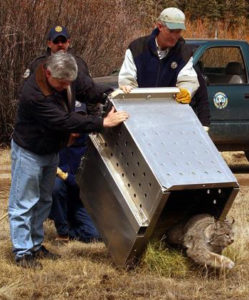Noted physician and educator Lewis Thomas wrote, “We are, perhaps, uniquely among the Earth’s creatures, the worrying animal. We worry away our lives, fearing the future, discontent with the present, unable to take in the idea of dying, unable to sit still.”
Other species do not stew and fret over everything as we tend to do; they don’t worry about being late, paying debts, or offending each other. They certainly don’t worry about their impact on the environment. Mankind does. We not only worry about our surroundings, we tend to blame ourselves for everything from the global climate to the fate of the lowliest ant.
This propensity for self-doubt is often a good thing, admonishing us to tread lightly upon nature, improve our environment whenever possible, and discontinue practices found to be harmful. But it also makes it bewilderingly difficult – sometimes impossible – to acknowledge environmental achievements so we can move on.
A primary example this month was the federal government’s announced intention to remove the lynx from the endangered species list. We should all be thrilled by an acknowledgment that our recovery programs have succeeded. In fact, lynx recovery is among the great success stories in the history of conservation, and we should proudly tell our grandchildren how a beautiful animal once thought to be in danger of extinction now thrives, well beyond its historic range. However, that was not the reaction of many environmental industry leaders to this news.
Some accuse the Administration of throwing science out the window, though this de-listing discussion started under the previous Administration. Others simply assert that lynx are still declining in numbers and territory, all the contrary evidence notwithstanding. The truth is that some organizations just cannot admit success, ever, because it does not fit their standard narrative – that the Earth’s environment is collapsing, man is causing it, and the only answer is more money. People do not join organizations, donate money, pay dues, and hire lawyers when everything is fine. Thus, groups like these continually need boogeymen; they must run around like Chicken Little telling everyone the sky is falling.
This is not their fault, not really. If all was well, the environmental lobby would no longer be needed, so it can never fully acknowledge successes. That is the nature of non-profit organizations, and their lawyers and lobbyists – on both sides. It’s entirely understandable, but also sad, because it denies the public an understanding of how effective some programs have been. We are cheated, at least for a time, of the chance to be satisfied.
Colorado began reintroducing lynx in 1999, the most publicized and controversial of numerous programs to reintroduce threatened and endangered species in our State. Lynx were never common in Colorado (fewer than 20 had been documented in the entire history of the State), and the federal government insists even today that the State is too far south to be important habitat long-term. The U.S. Fish and Wildlife Service always said that. Yet the U.S. Forest Service had nevertheless instructed every national forests in the Rocky Mountain Region to rewrite their management plans to avoid threats, to a species that did not live there and never really had.That meant the debate was all about land management: whether to close roads, ban snowmobiles, stop ski area expansions, stop oil and gas exploration, stop logging, stop mining, stop grazing, stop hunting. It was about everything except the lynx, because there weren’t any. When the State asked how many there should be, how success would be defined, the government could not answer. So our decision to bring them back was at least partly about survival for communities dependent on various multiple uses of public lands. If the species were recovered it would no longer be federally protected, and could not be used as a tool to stop human activity.
The program soon became much more than survival, though. It became an extraordinarily rewarding success for State wildlife officials, and for those of us in the parent Department of Natural Resources, the Governor, legislators who supported the program, industry partners, and especially the people of Colorado. We introduced about 218 lynx into the Southern Rockies, they eventually settled in, and at least that many kittens were born over the next few years. By 2010 the State was able to declare the program completely successful, having established a healthy, self-sustaining population (births outnumber deaths long-term). To this day, I remain as proud of that program and its success as anything during my years as Executive Director of the Department of Natural Resources.
The federal decision to begin the delisting process is based on its extensive review of the best available scientific information, as required by law, and almost 20 years of work by states like Colorado, as well as tribal, industry and other land managers. There are still plenty of challenges to worry about; we ought to take a moment to be proud of at least one great accomplishment.
A version of this column originally appeared in the Grand Junction Daily Sentinel January 19, 2018.





Comments on this entry are closed.